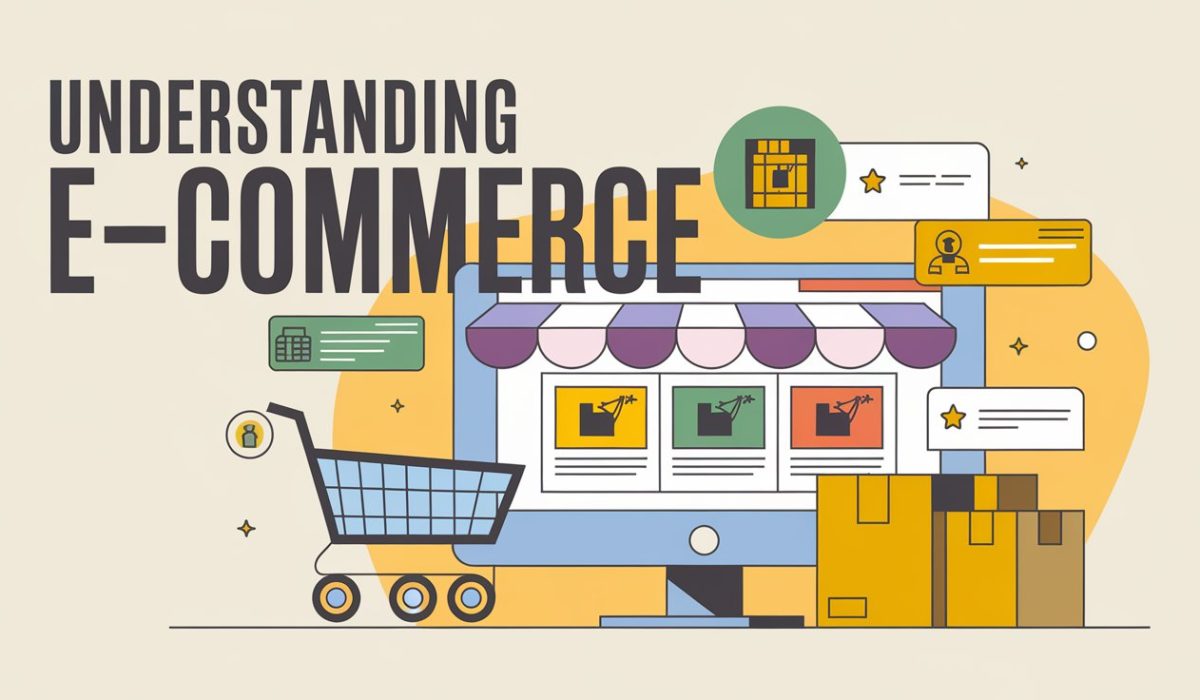Understanding E-commerce: A Comprehensive Guide
E-commerce, or electronic commerce, has revolutionized the way businesses operate and consumers shop. It encompasses buying and selling goods and services over the internet, and its significance has grown exponentially in recent years. This guide will help you understand the fundamentals of e-commerce, its various models, benefits, and trends.
1. What is E-commerce?
E-commerce refers to any commercial transaction that occurs online. This can involve businesses selling directly to consumers (B2C), businesses selling to other businesses (B2B), or consumers selling to one another (C2C). E-commerce platforms facilitate these transactions, allowing customers to browse products, make purchases, and engage in various payment methods.
2. Types of E-commerce Models
E-commerce can be categorized into several models, including:
- Business to Consumer (B2C): The most common model where businesses sell products directly to consumers. Examples include online retailers like Amazon and Walmart.
- Business to Business (B2B): Companies sell products or services to other businesses. This model often involves bulk purchases and long-term contracts.
- Consumer to Consumer (C2C): Consumers sell directly to other consumers, usually through online marketplaces like eBay and Etsy.
- Consumer to Business (C2B): Individuals offer products or services to businesses, such as freelancers or influencers providing services to companies.
Understanding these models helps businesses identify their target market and tailor their strategies accordingly.
3. Benefits of E-commerce
E-commerce offers numerous advantages for both businesses and consumers:
- Convenience: Shopping can occur 24/7 from anywhere with an internet connection, eliminating the need to visit physical stores.
- Wider Reach: Businesses can access a global audience, expanding their market beyond local customers.
- Cost Savings: E-commerce often involves lower operational costs compared to brick-and-mortar stores, enabling businesses to offer competitive prices.
- Personalization: Online platforms can track user behavior and preferences, allowing for personalized shopping experiences through targeted marketing.
These benefits make e-commerce an appealing option for many businesses and consumers alike.
4. Key Components of E-commerce
To successfully operate an e-commerce business, several key components are necessary:
- E-commerce Platform: This is the foundation of an online store. Popular platforms include Shopify, WooCommerce, and Magento, which offer customizable features for businesses.
- Payment Gateway: Secure payment processing is crucial. Payment gateways like PayPal, Stripe, and Square facilitate transactions and ensure customer data protection.
- Website Design: An intuitive, user-friendly website design enhances the shopping experience. Elements like navigation, product displays, and mobile responsiveness are essential.
- Digital Marketing: Effective marketing strategies, such as SEO, social media, and email marketing, are vital for driving traffic and increasing sales.
Understanding these components helps businesses create a seamless online shopping experience.
5. Challenges of E-commerce
While e-commerce has many advantages, it also presents challenges:
- Security Risks: Cybersecurity threats, including data breaches and fraud, can pose significant risks to e-commerce businesses and their customers.
- Intense Competition: The low barrier to entry in e-commerce means many businesses compete for the same audience, making differentiation crucial.
- Shipping and Logistics: Efficiently managing inventory, shipping, and returns can be challenging, especially for businesses experiencing rapid growth.
Being aware of these challenges enables businesses to develop strategies to mitigate risks.
6. Trends in E-commerce
E-commerce is constantly evolving, influenced by technological advancements and consumer behavior. Some current trends include:
- Mobile Commerce: With the rise of smartphones, mobile shopping is becoming increasingly popular. Optimizing websites for mobile users is essential for capturing this audience.
- Social Commerce: Social media platforms are integrating shopping features, allowing users to make purchases directly through their feeds. This trend leverages the power of social influence.
- Sustainability: Consumers are becoming more environmentally conscious, leading to a demand for sustainable products and practices. E-commerce businesses are responding by adopting eco-friendly approaches.
Staying updated on these trends helps businesses remain competitive in the dynamic e-commerce landscape.
Conclusion
Understanding e-commerce is essential for anyone looking to thrive in the digital marketplace. By grasping the various models, benefits, challenges, and trends, businesses can develop effective strategies to succeed. As e-commerce continues to grow, embracing innovation and adapting to consumer preferences will be key to achieving lasting success in this ever-changing industry.
